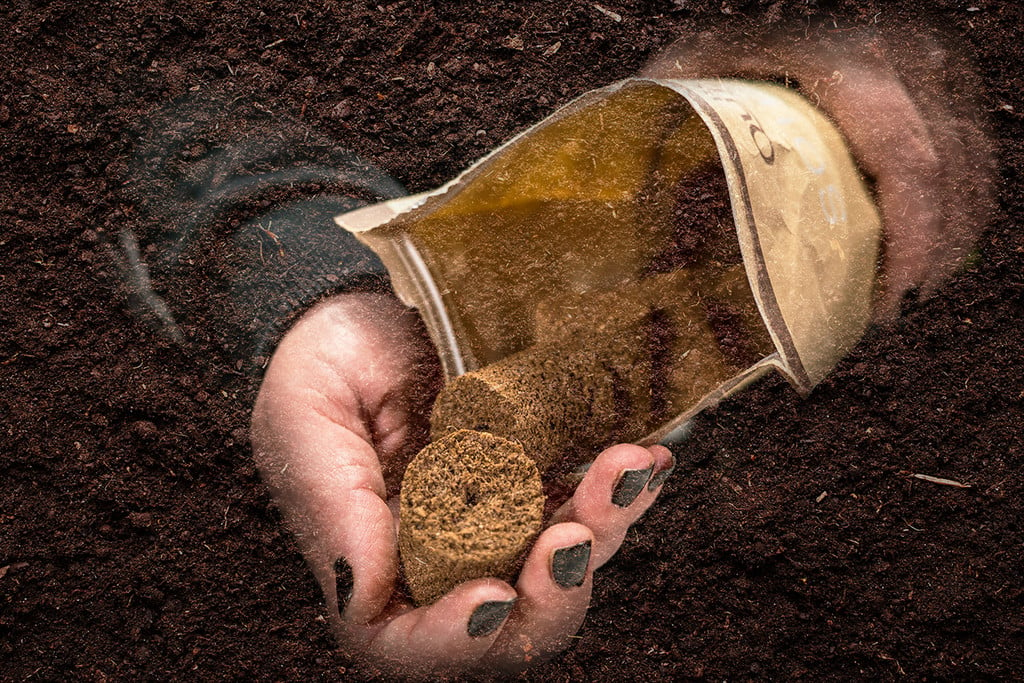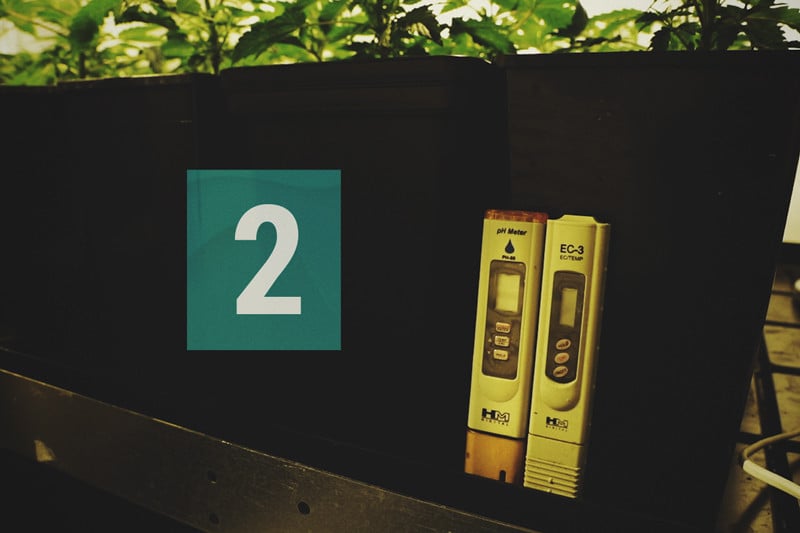 Weed Grow Guide by Royal Queen Seeds
Weed Grow Guide by Royal Queen Seeds
- Growing weed step by step
- Marijuana growing basics
- Choosing your seeds
- How to germinate seeds
- The marijuana vegetative stage
- The marijuana flowering stage
- Harvesting marijuana
- Trimming, drying, and curing
- Choosing pots and soil
-
Growing indoors
- A Complete Overview Of Growing Cannabis Indoors
- Cannabis Cultivation Tips: How To Set Up Indoor Grow Lights
- How Many Cannabis Plants Can You Grow Per Square Metre?
- Indoor Cannabis Growing: Relative Humidity and Temperatures
- Hydroponics Cannabis Growing Guide (with diagrams)
- Cannabis Micro Growing: Growing Great Weed in Tiny Spaces
- Growing outdoors
- How to grow autoflowering marijuana
- Marijuana nutrients and pH
- Marijuana troubleshooting: Nutrients
-
Marijuana troubleshooting: Growing
- Cannabis Seed Germination — Troubleshooting Guide
- How to Deal With Pythium (Root Rot) in Cannabis Plants
- Slow Cannabis Plant Growth And What You Can Do About It
- How to Deal With Leggy Cannabis Seedlings
- Watering Your Cannabis: How to Fix Overwatering and Underwatering
- Understanding Male, Female, And Hermaphrodite Cannabis
- Identifying and Treating Common Cannabis Ailments
- How To Revive a Sick Cannabis Plant
- How to Avoid Moldy Marijuana During Drying and Curing
- How to Prevent and Treat Dry and Crispy Cannabis Leaves
- What Cannabis Leaves Can Tell You
- Causes and Solutions for Yellow Cannabis Leaves
-
Marijuana Strains Grow Report
- HulkBerry Automatic Grow Report
- Blue Cheese Auto Grow Report
- Purple Punch Automatic Strain Grow Report
- Triple G Automatic Grow Report
- Do-Si-Dos Automatic Grow Report
- Green Gelato Automatic Grow Report
- Haze Berry Automatic Grow Report
- Purple Queen Automatic Grow Report
- Cookies Gelato Automatic Grow Report
- Sherbet Queen Automatic Grow Report
- Sweet Skunk Automatic Grow Report
- Medusa F1 Grow Report
- Marijuana plant training
-
Marijuana growing tips
- The Cannabis Plant Anatomy
- How to preserve seeds - RQS USA
- How Much Sunlight Do Outdoor Cannabis Plants Need To Grow?
- How to Control and Prevent Stretching in Cannabis Plants
- My Cannabis Plants Are Growing Too Tall: What Should I Do?
- Should You Worry About Purple Or Red Cannabis Stems?
- What To Do When Your Indoor Cannabis Won’t Flower
- How To Protect Your Cannabis Plants From Heat Stress
- How To Tell If Your Female Cannabis Plant Has Been Pollinated
- Growing Medical Marijuana
- Bud Washing: How to Clean Your Weed
- Understanding Cannabis Yield per Plant

Understanding pH and How It Affects Cannabis Plants
Contents:
- What is soil pH?
- How pH affects nutrient availability
- Understanding and preventing nutrient lockout
- Cannabis pH — faqs
- Measuring pH with drops
- Measuring pH with a digital pH meter
- How to adjust pH when growing cannabis
- How to correct pH for cannabis (in soil and hydroponics)
- Cannabis and pH — the takeaway
- Soil pH measures acidity or alkalinity and significantly impacts cannabis plant health. The ideal pH range for soil-grown cannabis is 6.0–7.0.
- Cannabis plants can only absorb nutrients within a specific pH range, and deviations can lead to nutrient deficiencies and "nutrient lockout."
- Digital meters or pH testing kits can be used to test soil or water pH. Adjustments can be made using “pH up” or “pH down” solutions or natural methods such as compost.
- Proper pH management promotes healthier, more vigorous cannabis plants, leading to higher-quality harvests.
What Is Soil pH?
pH is a measure of how acidic or alkaline something is. The pH scale ranges from 1–14, with a pH of 7 being neutral (the pH of pure water). If pH is lower than 7, a substance is considered acidic (think vinegar or lemon juice). If the pH is higher than 7, the substance is alkaline, as is the case with soaps, bleach, and ammonia.
In more scientific terms, pH level has to do with the concentration of hydrogen ions, say in the water you give to your plants. The pH scale is logarithmic to the base 10, which means that water with a pH of 6 is already 10x more acidic than water with a pH of 7.
Below is a basic chart of the different pH levels of common items:
| 1.0 - Battery acid |
|---|
| 2.0 - Lemon juice and vinegar |
|---|
| 3.0 - Orange juice and soda |
|---|
| 4.0 - Tomato juice |
|---|
| 5.0 - Black coffee and bananas |
|---|
| 6.0 - Urine and milk |
|---|
| 7.0 - Pure water, not tap or bottled water (the pH tap or bottled water can vary considerably) |
|---|
| 8.0 - Seawater and eggs |
|---|
| 9.0 - Baking soda |
|---|
| 10.0 - Milk of Magnesia and the water of the Great Salt Lake, Utah |
|---|
How pH Affects Nutrient Availability
The pH of your soil directly impacts your cannabis plants’ ability to absorb nutrients. That’s because different nutrients become soluble at different pH levels. At a pH of 6.5, most nutrients are available as water-soluble ions that are readily absorbed via your plants’ roots. In turn, your plants get the nutrition they need to maximise growth.
When the pH levels of your soil rise too far above or below 6.5, however, the availability of nutrients changes. At lower pH levels, for example, iron (Fe), manganese (Mn), and aluminium (Al) become more readily available to plants—all of which are toxic in excess.
Meanwhile, at higher pH levels, potassium (K), phosphorus (P), sulphur (S), boron (B), and molybdenum (Mo) become more accessible to plants. Either way, when your soil pH is off, your plants cannot absorb the right balance of nutrients they need for healthy growth.
The Benefits of Maintaining the Perfect pH
The benefits of caring for and maintaining your plants’ pH is pretty straightforward; you’ll have healthier plants that demonstrate more vigorous growth and, as a result, produce better harvests. Plus, you’ll also ensure that the time and money you’ve spent fertilising your plants is paying off.
By regularly checking the pH of your growing medium, you’ll be able to ensure that your plants are able to take up all the nutrients you’re giving them. You’ll also be able to catch any pH imbalances early, minimising your risk of running into nutrient deficiencies later on in your grow (more on that below).
Signs of High and Low pH in Cannabis Plants
Some signs that your pH is off when growing cannabis include:
| Low pH |
|
| High pH |
|
| Low pH |
|
| High pH |
|
Note that all of the above symptoms are actually caused by nutrient deficiencies resulting from pH imbalances. However, you won’t be able to address them simply by giving your plants more of the nutrients they’re lacking. Instead, you’ll need to re-regulate your pH by flushing your soil to rid it of excess nutrient reservoirs, and then begin feeding your plants with a balanced mix of nutrients again.
Trouble with your grow? Download our guide for expert tips on keeping your plants thriving!
Free RQS
Grow Guide!

Understanding and Preventing Nutrient Lockout
Nutrient lockout (sometimes referred to as “nutrient lock”) occurs when your cannabis plants can’t absorb nutrients from the soil or the fertilisers you’re using to feed them. One of the primary causes of nutrient lockout is pH imbalance, but it can also be caused by salt buildup near the root zone as a result of feeding with mineral fertilisers (which tend to have a high salt content).
Best pH for Flowering Stage in Soil
Cannabis plants grow effectively at a neutral pH range of 6–7 from seed to harvest. However, experienced growers often like to raise their soil pH slightly to 6.5–7.5 during flowering to maximise their plant’s ability to absorb essential flowering nutrients. Both potassium and phosphorus (the most important macronutrients to support flower development), as well as calcium, sulphur, and magnesium, all become increasingly available at slightly elevated pH levels.
By gently increasing the pH of your soil, you’ll ensure your plants get a good balance of flowering nutrients while simultaneously reducing their access to nitrogen—which they won’t need during their bloom phase. In fact, high nitrogen availability during flowering can cause nutrient imbalances that greatly hinder flower development.
-
Soil pH range: 6.0–7.0
If you grow in soil, the optimal pH level for the root zone is between 6.0 and 7.0. However, there is no set number within this range that is “best”. Instead, it can be good to allow for some natural fluctuation within this window to support optimal nutrient uptake.
So, as you adjust, try a slightly different reading each time. You can, for example, adjust your pH to 6.2 for one watering, then 6.6 the next. As long as it stays within 6.0–7.0, you should be fine. Soil is also more forgiving when it comes to pH imbalances, but it can only give so much.
If you grow purely organically—where you do not administer mineral nutrients—pH is less of an issue. If you’re using amended or composted soil with organic matter, the microorganisms within will make the nutrients more available to the roots. However, most growers using standard potting mixes and mineral nutrients will indeed have to reckon with pH.


- Go Organic and Forget About Measuring pH
At RQS, we’re big proponents of organic cannabis growing; not only because it delivers a far superior product, but because it takes some of the hassle out of growing, especially when it comes to pH.
While using chemical nutrients might seem simple, it can actually take some time and practice to get the hang of properly fertilising your cannabis plants with liquid mineral fertilisers. Organic nutrients, on the other hand, naturally promote the health of your plants by supporting the development of healthy microbial life within your medium.
Using natural fertilisers like compost, worm castings, and bone meal creates a breeding ground for healthy bacteria and fungi that keep the conditions of your soil optimal, so there’s usually no need to monitor the pH of your soil as closely as you would otherwise.
-
Hydroponics and Soilless pH range: 5.5–6.5
Hydro and soilless grows are a different beast when it comes to pH. If you grow soilless, say in coco, the optimal pH level at the root zone should be somewhat lower than in soil, between 5.5–6.5. The same goes for all methods of hydro.
With these methods, it is just as important that you allow the pH level to fluctuate across the acceptable range to support nutrient uptake. For example, in hydro, calcium and magnesium are mostly absorbed at pH levels above 6, while other nutrients like manganese prefer a slightly lower pH.
Then again, this shouldn't be an issue since pH levels will naturally fluctuate slightly with each feeding in a hydroponic setup. You will only need to correct if the pH level exits the optimal 5.5–6.5 range.
When growing in coco, perlite, or hydroponically, you are in charge of administering nutrients directly to the root zone via the water, which means huge pH fluctuations are more of a risk than in soil. The inert media used in hydro and soilless grows merely retains water and provides support for the roots. So, when administering nutrients, be careful that you don’t overload your plants.


How to Monitor and Adjust Cannabis Water pH
One of the most important parts of maintaining a healthy soil pH is regularly testing the pH of your water. The pH of both bottled and running water can vary greatly and will directly affect the pH of your plants' soil. Hence, we recommend you always measure the pH of your water before watering your plants while simultaneously tracking the pH of your runoff.
One of the most traditional ways of tracking soil pH is with a pH test kit. To do this, you’ll want to:
- Take a sample of your water, nutrient solution, or runoff.
- Add 1–2 drops of pH solution.
- Shake the mixture to combine it properly.
- Compare the color of your mixture to the color chart that came with your kit.
After a more accurate and straightforward way to measure pH in your cannabis garden? Look no further than our pH Tester by Hanna Instruments. Following a simple calibrating process, this pocket-sized meter will provide you with exact pH readings in an instant—all without squinting to compare color charts.
Cannabis pH — FAQs
Let’s break down some of the most common questions related to cannabis pH. Feel free to refer to these if you encounter any pH-related issues during your grow.
Ver esta publicación en Instagram
Measuring pH With Drops
pH measuring kits usually contain a test tube, a bottle of testing solution, and a color-coded pH chart. Testing the pH of your soil with these kits is super simple:
1. Prepare your fertiliser as per usual and stir it gently. Be careful not to over oxygenate your fertiliser as this may throw off your pH reading.
2. Half-fill your test tube with your fertiliser and add 3 drops of testing liquid into it.
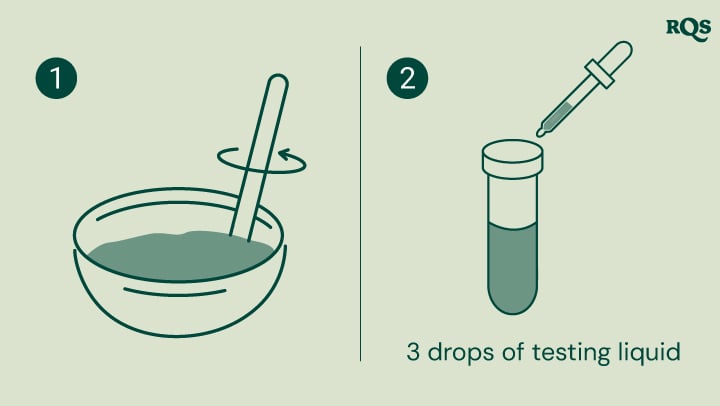
3. Gently shake the test tube to mix the pH testing solution with your fertiliser.
4. Use the color chart to read the pH of your fertiliser and, if needed, use pH up/down products to adjust it.
5. Repeat this process with the runoff from your fertiliser. If the pH reading from your runoff is far below or above that of your fertiliser and in the danger zone (below 5 or above 7), you may need to regulate the pH of your soil.

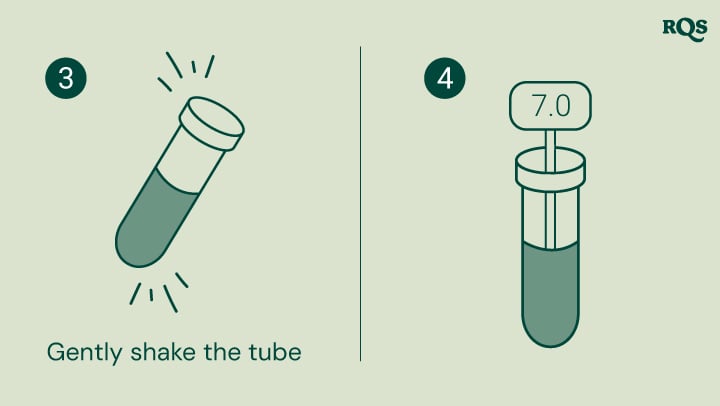
Measuring pH With a Digital pH Meter
Measuring pH with a digital pH meter (like our pH tester) couldn’t be any more simple. After you’ve calibrated your device, simply stick it into your fertiliser, runoff, and soil to get an accurate reading of the pH in your garden.
How to Adjust pH When Growing Cannabis
If the pH of your fertiliser, soil, or water is far out of the optimal range, you’ll need to adjust it quickly. This can be done using “pH up” and “pH down” products, which you can obtain at any grow store. If your pH is too high, you will of course need to add some pH down, and vice versa.
-
Using pH Down
Given the alkalinity of most tap water, you’ll usually need to lower your pH rather than raise it on most occasions. To do this, add small amounts of pH down solution (there are many different brands on the market) either to your water or nutrient solution, stir, and test the pH again. Repeat the process until your pH levels are right.
-
Using pH Up
The process of raising the pH of your water or nutrient solution is the same as lowering it. Simply add small amounts of pH up to your nutes or water until your pH readings are on par.
-
Alternative Ways to Lower or Raise pH When Growing Cannabis
Besides using pH adjusters, you can also lower or raise the pH of your soil using a variety of natural products. Manure, compost, worm castings, compost teas, pine needles, and wood shavings all help gently lower the pH of your soil over time.
And, while these products tend to take longer to take effect, they also help to establish healthy microbial life around your plant’s roots, which helps promote the healthy growth of your plants and keeps them protected from pathogens and pests.
Lemon juice and vinegar are also very effective at driving down pH. Just remember to dilute either in water to avoid driving down the pH too drastically and/or damaging your plant's roots.
The most common product used to raise the pH of soil is lime or limestone, which can come in powder, pellet, or hydrated form. Alternatively, we recommend using wood ash, which helps to raise pH more gradually and also contributes potassium, calcium, and other micronutrients to your soil.

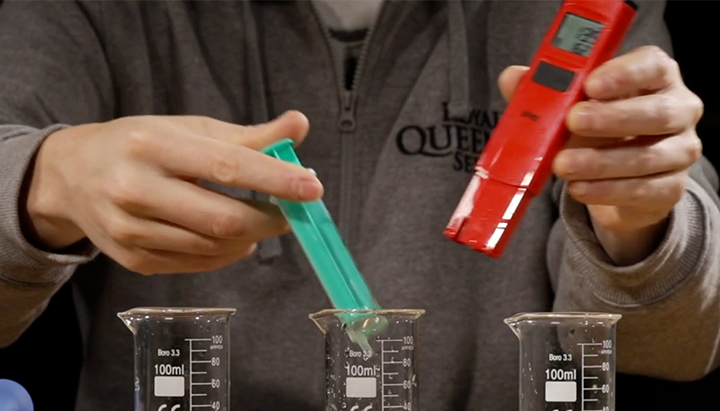
How to Correct pH for Cannabis (In Soil and Hydroponics)
- Always test the pH of your soil or reservoir before making any adjustments to it.
- If your pH is too high (too alkaline), we recommend adding small amounts of lemon juice or vinegar into your water when watering your plants (when growing in soil). For the best results, dilute the juice or vinegar in at least 5–10 parts water, apply it gradually, and continue testing your pH until you get a level you're happy with. If you’re using hydroponics, we recommend adding small amounts of pH down (1–2ml) to your reservoir at a time until you get the right pH reading.
- If your pH is too low (too acidic), we recommend using a liquid dolomite lime product to raise the pH of your soil. If you need a quick fix, you can also try raising your pH by adding baking soda to your water, but most growers find the results to be short-lived and end up turning to dolomite lime for more stable results. In hydroponics, we recommend using a natural pH up solution to regulate your pH levels.

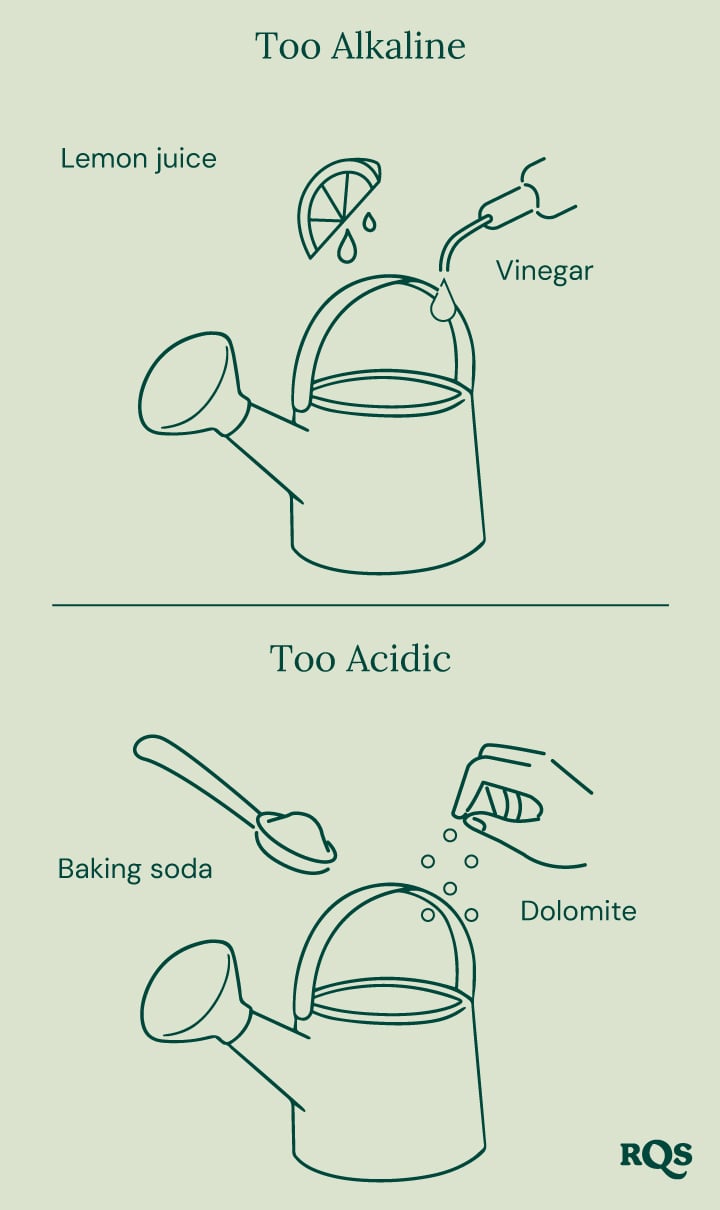
Cannabis and pH — The Takeaway
Monitoring and regulating the pH of your soil or reservoir is one of the keys to growing healthy cannabis plants and producing a great harvest. If you’ve got your own tips for regulating the pH in your cannabis garden, make sure to share them in the comments below!
 Grow Guide Topic Finder
Grow Guide Topic Finder
- Growing weed step by step
- Marijuana growing basics
- Choosing your seeds
- How to germinate seeds
- The marijuana vegetative stage
- The marijuana flowering stage
- Harvesting marijuana
- Trimming, drying, and curing
- Choosing pots and soil
-
Growing indoors
- A Complete Overview Of Growing Cannabis Indoors
- Cannabis Cultivation Tips: How To Set Up Indoor Grow Lights
- How Many Cannabis Plants Can You Grow Per Square Metre?
- Indoor Cannabis Growing: Relative Humidity and Temperatures
- Hydroponics Cannabis Growing Guide (with diagrams)
- Cannabis Micro Growing: Growing Great Weed in Tiny Spaces
- Growing outdoors
- How to grow autoflowering marijuana
- Marijuana nutrients and pH
- Marijuana troubleshooting: Nutrients
-
Marijuana troubleshooting: Growing
- Cannabis Seed Germination — Troubleshooting Guide
- How to Deal With Pythium (Root Rot) in Cannabis Plants
- Slow Cannabis Plant Growth And What You Can Do About It
- How to Deal With Leggy Cannabis Seedlings
- Watering Your Cannabis: How to Fix Overwatering and Underwatering
- Understanding Male, Female, And Hermaphrodite Cannabis
- Identifying and Treating Common Cannabis Ailments
- How To Revive a Sick Cannabis Plant
- How to Avoid Moldy Marijuana During Drying and Curing
- How to Prevent and Treat Dry and Crispy Cannabis Leaves
- What Cannabis Leaves Can Tell You
- Causes and Solutions for Yellow Cannabis Leaves
-
Marijuana Strains Grow Report
- HulkBerry Automatic Grow Report
- Blue Cheese Auto Grow Report
- Purple Punch Automatic Strain Grow Report
- Triple G Automatic Grow Report
- Do-Si-Dos Automatic Grow Report
- Green Gelato Automatic Grow Report
- Haze Berry Automatic Grow Report
- Purple Queen Automatic Grow Report
- Cookies Gelato Automatic Grow Report
- Sherbet Queen Automatic Grow Report
- Sweet Skunk Automatic Grow Report
- Medusa F1 Grow Report
- Marijuana plant training
-
Marijuana growing tips
- The Cannabis Plant Anatomy
- How to preserve seeds - RQS USA
- How Much Sunlight Do Outdoor Cannabis Plants Need To Grow?
- How to Control and Prevent Stretching in Cannabis Plants
- My Cannabis Plants Are Growing Too Tall: What Should I Do?
- Should You Worry About Purple Or Red Cannabis Stems?
- What To Do When Your Indoor Cannabis Won’t Flower
- How To Protect Your Cannabis Plants From Heat Stress
- How To Tell If Your Female Cannabis Plant Has Been Pollinated
- Growing Medical Marijuana
- Bud Washing: How to Clean Your Weed
- Understanding Cannabis Yield per Plant



























